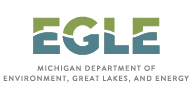- Oakland County and Parks and Recreation Commission investing more than $20 million in local parks in partnership with communities.
- Portions of Beech Woods Park in Southfield and Shepherd Park in Oak Park, Hawthorne Park in Pontiac, and Ambassador Park in Madison Heights will become the newest additions to the Oakland County Parks system.
- Grant funding will also provide several local governments with support for local park and recreation facility improvements.
Pontiac, Michigan – The Oakland County Executive Office, Board of Commissioners, Parks and Recreation Commission, and local communities are collaborating to transform local parks by investing more than $20 million in the Healthy Communities Park and Outdoor Recreation Investment Plan.
The Oakland County Board of Commissioners approved utilizing $15 million of the county’s $244 million share of American Rescue Plan Act dollars while the Oakland County Parks and Recreation Commission is providing $5.2 million in matching funds.
“As a former Oakland County Commissioner and mayor of Ferndale, I have been passionate over the years about the need to beef up our parks system in the south end of the county,” County Executive Dave Coulter said. “These projects will add or improve 10 parks in the county’s south end, providing more equitable access to parks in our more densely populated areas, many of which are within walking distance of public transportation.”
The goals of the plan include revitalizing and enhancing parks located in or servicing residents of communities most impacted by the pandemic; improving physical and mental health, social connectivity, and quality of life of residents; and addressing barriers to equitable access and use of quality park and recreation opportunities for residents of all ages and abilities.
“Increasing access in our more populated areas to our county parks and recreation opportunities has long been a priority,” said Oakland County Board of Commissioners Chairman David T. Woodward, who represents Royal Oak. “I’m proud this new parks plan applies an equity lens for the future of parks around the county, so everyone can better enjoy and experience the outdoors while achieving healthier outcomes for all.”
Oakland County Parks and Recreation will make major improvements at select local parks and transition management responsibilities to Oakland County Parks and Recreation. Portions of Beech Woods Park in Southfield and Shepherd Park in Oak Park, Hawthorne Park in Pontiac, and Ambassador Park in Madison Heights will become the newest additions to the county parks system. Oakland County Parks will also partner with the Hazel Park Community Center to develop joint recreation programming facilities.
“The public turned to parks and trailways in record numbers during the pandemic to enjoy the positive impacts spending time outdoors can have on our physical and mental wellbeing,” Oakland County Parks and Recreation Commission Chairman Gary McGillivray said. “Oakland County Parks appreciates the support of Executive Coulter and the Commission for this major financial commitment towards improving recreation facilities in our communities. It will pay dividends for generations to come.”
Grant funding will also provide several local governments with support for local park and recreation facility improvements. Among the beneficiaries of these investments are Green Acres Park in Hazel Park, Pontiac municipal parks, Mack-Rowe Park in Royal Oak Township, Shepherd Park in Oak Park, and Beech Woods Park in Southfield, where officials unveiled the plan today during a news conference.
“Those outside and even inside the City of Southfield may not realize it, but we are home to several wonderful parks and nature preserves,” said Oakland County Commissioner Yolanda Smith Charles, who represents Southfield and Oak Park. “Through the use of these funds from the county, we demonstrate both a strong partnership between local governments and a commitment to maintaining and improving green spaces in our region, even in city settings.”
“I’m glad that the county is partnering with Pontiac to provide funding for our parks,” said Oakland County Commissioner Angela Powell, who represents Pontiac. “Residents around our city will now rely more on our outdoor spaces for fresh air and exercise, and it’s important that we keep improving these areas for everyone.”
Communities whose parks will benefit from these major investments are Hazel Park, Madison Heights, Oak Park, Pontiac, Royal Oak Township, and Southfield. Examples of improvements include walking and hiking trails, universally accessible playgrounds, outdoor exercise and fitness equipment, athletic fields and courts, water and winter recreation facilities, natural resource restoration and preservation, and family and group gathering spaces. See the attached Healthy Communities Park and Outdoor Recreation Investment Plan documents for a complete list of conceptual park investments. Click here for more information.
Below are quotes from other local leaders about the $20 million Healthy Communities Park and Outdoor Recreation Investment Plan:
“Oakland County’s investment in Hazel Park’s parks and recreation facilities is truly an amazing game-changer for our community! Our city will be now able to update badly outdated facilities and equipment to provide vastly improved recreation services for Hazel Park and our neighboring communities.” -Edward Klobucher, Hazel Park city manager
“We are very excited to partner with Oakland County to improve the Ambassador Park in Madison Heights to bring park investment that will benefit residents of all ages. Having spaces for residents of all ages to play and participate in recreational activities is imperative for community building.” -Roslyn Grafstein, Madison Heights mayor
“To create a partnership that focuses on improving parks and recreation opportunities for our residents is something we have been moving toward for a long time. This investment from Oakland County comes at a time when we are working to elevate our public spaces in Oak Park. This partnership will allow us to take our recreation opportunities to new heights while still maintaining the history of David Shepherd Park.” -Erik Tungate, Oak Park city manager
“The City of Pontiac is grateful for the opportunity to enter into partnership with the Oakland County Parks and Recreation Commission and for the commission’s commitment to redevelop Hawthorne Park. Economic development goes hand-in-hand with environmental sustainability and investments in quality of life. That’s why this budding partnership is so important to Pontiac’s transformation.” -Tim Greimel, Pontiac mayor
“On behalf of Royal Oak Township residents, we would like to thank Oakland County Executive Dave Coulter and his staff, Oakland County Board of Commissioners Chairman David Woodward, and Oakland County Parks and Recreation Chairman Gary McGillivray and his staff for this generous and much appreciated grant award for the improvement of Mack-Rowe Park. This funding will allow Royal Oak Township to replace an outdated playscape, improve the baseball diamond, and add a beautifully designed sports court. All of this will help to create a much needed healthy, robust, and attractive park for our thriving community.” – Donna Squalls, Royal Oak Township supervisor and Donovan Jackson, parks and recreation director
“We are very pleased to be partnering with Oakland County Parks & Recreation for improvements to Beech Woods Park. Oakland County has many great facilities but not all of them at convenient distances for south Oakland residents. We truly appreciate the county’s desire to develop recreational facilities in Southfield.” -Kenson Siver, Southfield Mayor
Healthy Communities info sheet map10_31.pdf
ARPA poster boards 10_31.pdf



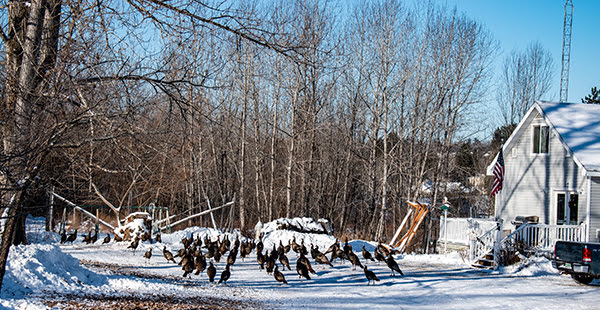
 By the 1950s, Michigan’s wild turkey population had disappeared due to unregulated hunting and habitat loss.
By the 1950s, Michigan’s wild turkey population had disappeared due to unregulated hunting and habitat loss.
 “It has brought so much pleasure and enjoyment to people either in viewing wild turkeys and knowing they were there or the ability to hunt in both the spring and fall.”
“It has brought so much pleasure and enjoyment to people either in viewing wild turkeys and knowing they were there or the ability to hunt in both the spring and fall.”
 “We created some of the highest-quality sustainable turkey hunting in the nation,” Stewart said. “That says a lot when your competitors for that are places like Missouri, that is the best wild turkey habitat in the world and the highest population. They don’t have deep snow.”
“We created some of the highest-quality sustainable turkey hunting in the nation,” Stewart said. “That says a lot when your competitors for that are places like Missouri, that is the best wild turkey habitat in the world and the highest population. They don’t have deep snow.”
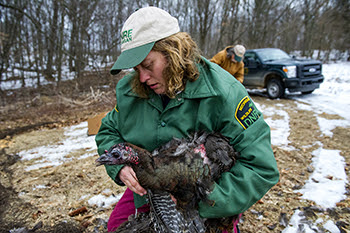 Scott Whitcomb, director of the DNR Office of Public Lands, accepted the award “on behalf of the DNR and the passionate sportsmen and women who contribute to and benefit from this effort.”
Scott Whitcomb, director of the DNR Office of Public Lands, accepted the award “on behalf of the DNR and the passionate sportsmen and women who contribute to and benefit from this effort.”
 Revenue to fund wild turkey management efforts – for the past several decades, now and into the future – comes directly from the sale of hunting licenses and equipment.
Revenue to fund wild turkey management efforts – for the past several decades, now and into the future – comes directly from the sale of hunting licenses and equipment.
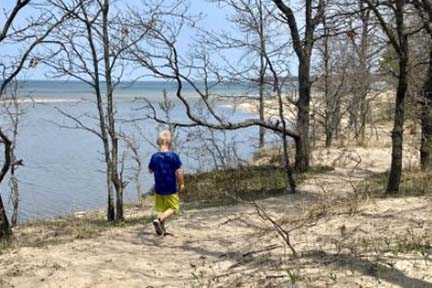

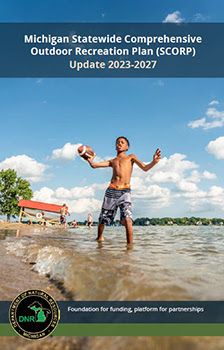 Michigan’s outdoor recreation system – including public lands and waters, playgrounds and bike paths, and so much more – provides critically important social, health, economic and environmental benefits to us all.
Michigan’s outdoor recreation system – including public lands and waters, playgrounds and bike paths, and so much more – provides critically important social, health, economic and environmental benefits to us all.

 The DNR’s survey vessel Steelhead and vessels from two other agencies cooperatively plied the waters of Lake Michigan in August, sampling key forage fish populations critical to the health of salmon, steelhead and lake trout, and found forage fish numbers to be improving in Michigan waters.
The DNR’s survey vessel Steelhead and vessels from two other agencies cooperatively plied the waters of Lake Michigan in August, sampling key forage fish populations critical to the health of salmon, steelhead and lake trout, and found forage fish numbers to be improving in Michigan waters.
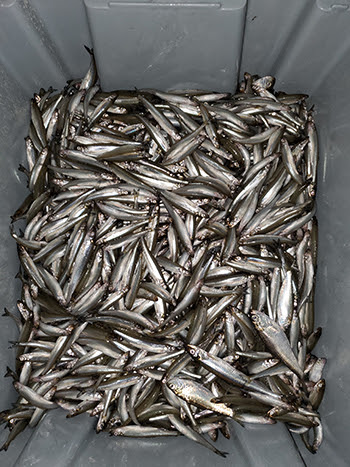 Transects completed by the S/V Steelhead this season stretched from waters offshore of Chicago in the south, around the Michigan shore, to Platte Bay in the north. At roughly the same time, the R/V Sturgeon completed transects along the Illinois and Wisconsin shore in the west, while the R/V Baird completed transects along the Wisconsin and Michigan shore in the north.
Transects completed by the S/V Steelhead this season stretched from waters offshore of Chicago in the south, around the Michigan shore, to Platte Bay in the north. At roughly the same time, the R/V Sturgeon completed transects along the Illinois and Wisconsin shore in the west, while the R/V Baird completed transects along the Wisconsin and Michigan shore in the north.
 Based on the 24 trawl tows and 16 gillnet lifts conducted in September by the Department’s R/V Tanner and Channel Cat, initial findings indicate few changes to the Saginaw Bay fishery. Overall, a total of 24 different species were collected by trawling and 27 different species were collected by gillnetting, with no new species collected.
Based on the 24 trawl tows and 16 gillnet lifts conducted in September by the Department’s R/V Tanner and Channel Cat, initial findings indicate few changes to the Saginaw Bay fishery. Overall, a total of 24 different species were collected by trawling and 27 different species were collected by gillnetting, with no new species collected.
 Lake Erie is one of the most popular fisheries in our state as it accounted, in 2021, for 14% of the total Great Lakes angling effort, 31% of the catch, a catch rate three times the other Great Lakes waters combined, and an angling intensity more than 54% that of the other Great Lakes waters in our state.
Lake Erie is one of the most popular fisheries in our state as it accounted, in 2021, for 14% of the total Great Lakes angling effort, 31% of the catch, a catch rate three times the other Great Lakes waters combined, and an angling intensity more than 54% that of the other Great Lakes waters in our state.
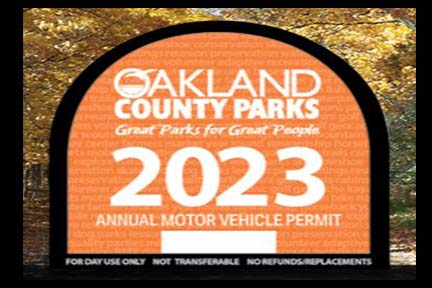
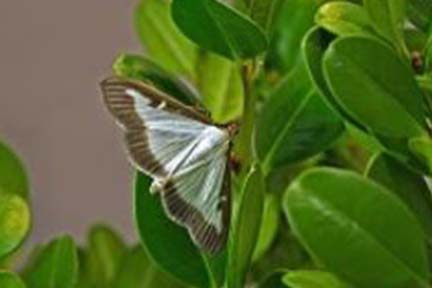

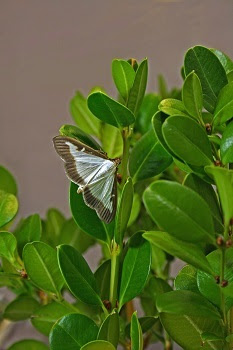 In May 2021, potentially infested boxwood plants were shipped to retail locations in several states including six in Michigan. The pest was then identified in three of the six Michigan facilities. It is not known whether the box tree moth populations detected in Clinton are linked or if the pest entered the state through another pathway.
In May 2021, potentially infested boxwood plants were shipped to retail locations in several states including six in Michigan. The pest was then identified in three of the six Michigan facilities. It is not known whether the box tree moth populations detected in Clinton are linked or if the pest entered the state through another pathway.
 Box tree moth caterpillars are green and yellow with white, yellow, and black stripes and black spots. The caterpillars feed only on boxwoods making them easy to spot. Adult box tree moth has two color forms. The most common form has white wings with dark brown borders, while the dark form has solid brown wings with a white streak or spot on each forewing. Both forms have a distinctive white dot or mark in the middle of each forewing.
Box tree moth caterpillars are green and yellow with white, yellow, and black stripes and black spots. The caterpillars feed only on boxwoods making them easy to spot. Adult box tree moth has two color forms. The most common form has white wings with dark brown borders, while the dark form has solid brown wings with a white streak or spot on each forewing. Both forms have a distinctive white dot or mark in the middle of each forewing.
